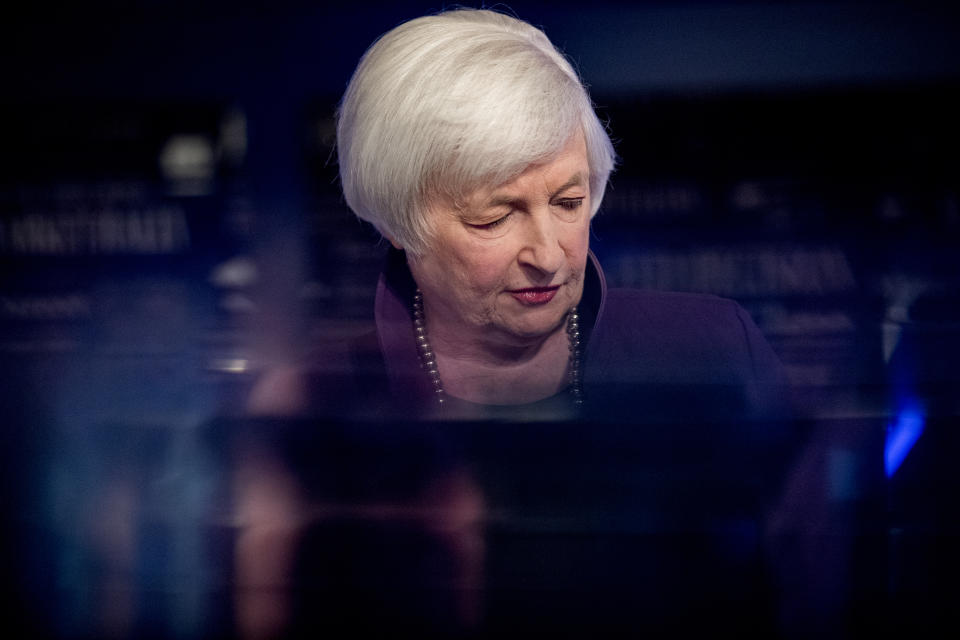Federal Reserve: We got it ‘wrong’ on post-crisis rate hikes
Current and former Federal Reserve officials say the timing of its interest rate hikes between 2015 and 2018 may have been a mistake, a rare moment of humility spurred by the Fed’s adoption of a new framework for approaching inflation.
Lael Brainard and Richard Clarida, both serving on the Fed’s Board of Governors, said this week that the Fed may have curbed a quicker post-2008 recovery in the job market by lifting off of zero interest rates too soon.
“There would have been a different concept of inflation, and a sense that there was no need to preemptively withdraw, or prepare to withdraw, on the basis of an expectation of inflation materializing,” Brainard said in a webinar Tuesday.
The rethink concerns the Fed’s understanding of the trade-off between unemployment and inflation. Fed officials had previously been guided by the idea that the unemployment rate could be too low, at which point the economy may experience higher inflation.
In practice, this could take the form of a labor market where employers have to bid wages up to attract workers, which could require those employers to then raise prices on goods or services.
That’s what led the Fed, under Chair Janet Yellen, to raise the benchmark interest rate in December 2015 - from near-zero to 25 basis points. Yellen has likened that decision to taking the Fed’s foot off the gas pedal of accommodative borrowing costs, defending the move as a way of keeping the economy from “overheating and inflation from significantly overshooting our objective.”
The unemployment rate at the time was 5.1%.
Prior to the COVID-19 crisis however, the unemployment rate fell as low as 3.5% with no signs of runaway inflation. Year-over-year changes in core personal consumption expenditures (the Fed’s preferred measure of inflation, which excludes food and energy prices) have averaged about 1.6% since the Fed adopted its 2% target in 2012 - a persistent undershoot.

Fed officials have pointed to other economic factors for the phenomenon of disinflation (not to be confused with deflation): the decline in worker bargaining power and global pressures on keeping final goods prices low.
Clarida said Monday the old frame of thinking “served us well” but added that econometric models “can be and have been wrong” in assuming that a low unemployment rate will lead to “excessive” pressure on inflation.
“Times change, as has the economic landscape, and our framework and strategy need to change as well,” Clarida said.
What If…
The new framework installed two major changes: allowing inflation to “moderately” overshoot its 2% target and prioritizing an assessment of the “shortfalls of employment from its maximum level.”
In practice, this means the Fed would tolerate prices rising above target without preemptively kicking off its hiking cycle like it did in 2015. All the while, the Fed would be focused on pulling in more workers into jobs.
Fed officials have pointed to the fact that marginalized people, such as low-income and Black workers, are among the last to experience employment gains in an economic recovery.
Brainard suggested that if the Fed had held off on raising rates, it may have arrived at 3.5% unemployment faster.
“The gains would have been greater,” Brainard said Tuesday.
In a webinar on Tuesday, Yellen said she supported the framework changes but defended the Fed’s early rate increases on the grounds that the unemployment rate continued to fall.
“It’s fair to say if our goal had been to overshoot 2% inflation, perhaps we would have waited a little bit longer to start the process of raising interest rates,” Yellen said. “So there is some truth that it might have made some difference, but I don’t think it would have made an extreme difference.”
For his part, current Fed Chairman Jerome Powell has said the central bank’s view is that “a robust job market can be sustained without causing an outbreak of inflation.”
Within the current context, the Fed finds itself grappling with a labor market in which 14.5 million Americans, sidelined by the coronavirus, are relying on unemployment insurance. Powell has said the Fed is “not even thinking about thinking about thinking about raising rates.”
The Fed’s next policy-setting meeting will take place September 15-16.
Brian Cheung is a reporter covering the Fed, economics, and banking for Yahoo Finance. You can follow him on Twitter @bcheungz.
Jackson Hole wrap-up: For the Fed, inflation is all about managing expectations
Cleveland Fed's Mester: GDP to be about 6% lower than last year for 2020
Jackson Hole: Fed Chair Powell unveils effort to target 'moderately' higher inflation
Jackson Hole Preview: Fed to take on 'deliberately vague' approach to targeting 2% inflation
A glossary of the Federal Reserve's full arsenal of 'bazookas'
Read the latest financial and business news from Yahoo Finance
Follow Yahoo Finance on Twitter, Facebook, Instagram, Flipboard, SmartNews, LinkedIn, YouTube, and reddit.
